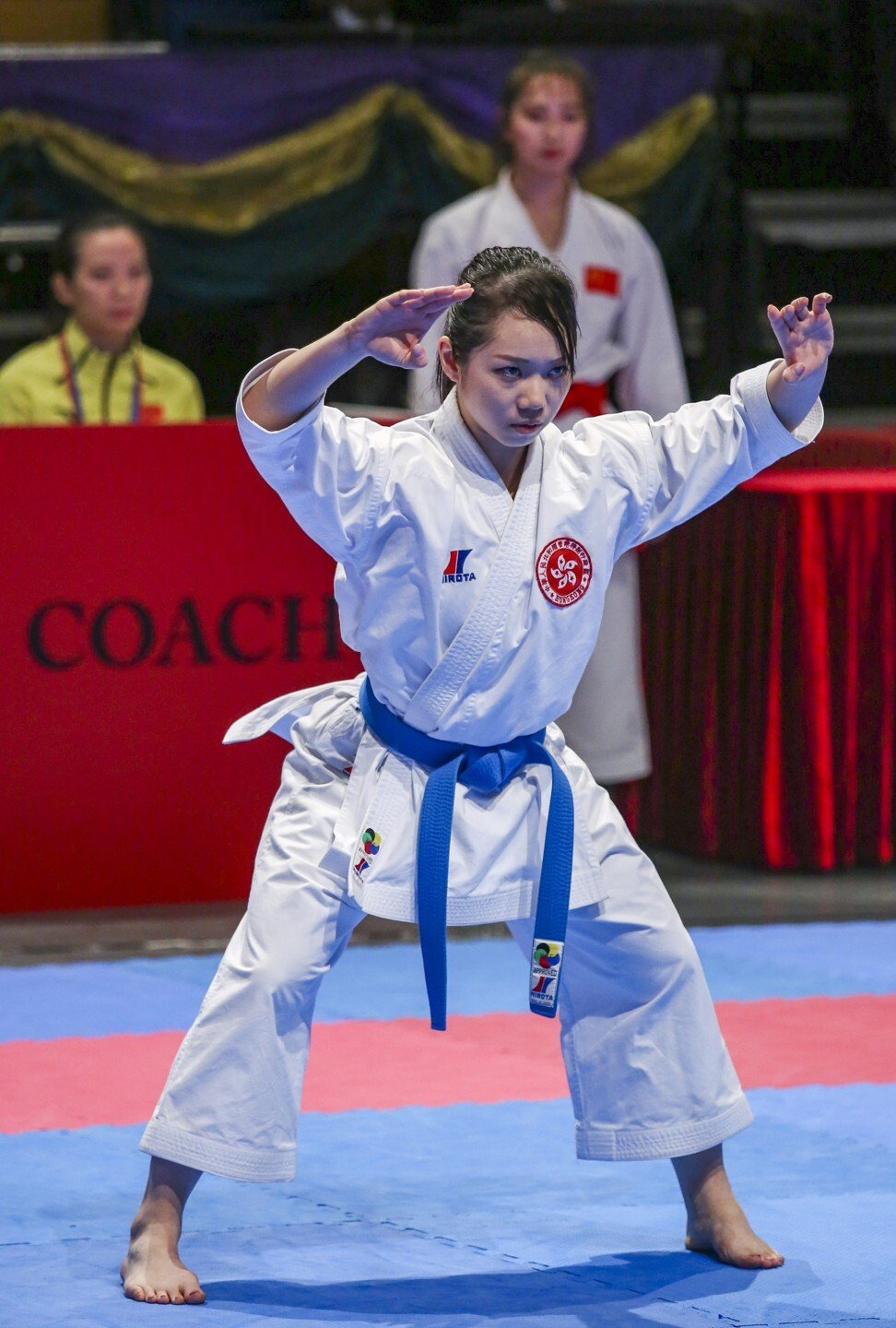
Tokyo Olympics: the ancient craft of kata, one half of the debuting karate discipline that merits performance and respect
- Hong Kong kata star Grace Lau is set to take the stage, but why is she not hitting a physical opponent?
- Originating from Ryukyu kingdom, judges assess both technical and athletic performance
The kata is one of two disciplines of karate (the other kumite, or sparring) and will be introduced to the Olympics for the first (and likely only) time in Tokyo. Hong Kong is fielding Grace Lau Mo-sheung – the world women’s individual kata No 6 – in the hope she wins another medal for what is already the city’s most successful Games in history.
Here’s what you need to know about this relatively unknown event, and how this ancient craft will translate into the top multi-sport competition on the planet.

What is kata?
Contrary to popular belief, karate is not only about combat. The martial art originating from Ryukyu kingdom, present-day Okinawa, is considered to have three limbs, one of which is kata.

04:10
Hong Kong’s greatest Olympics get even better with 2 bronze medals in table tennis and karate
Kata means “form” in Japanese. It is the performance of a series of predefined sequences. Despite its non-combat philosophy, the kata incorporates attack and defence in its movements, performed as if the karateka (karate practitioner) were facing a physical opponent.
The karateka performs a series of kicks, turns and punches, all while controlling their breathing, footwork, rhythm and power.
The kata movements are considered vehicles of the kata tradition passed from the master to their students, from one generation to the next.

What’s the history of kata?
“Kata is not a dance or theatrical performance,” the World Karate Federation (WKF) says in its rules. “It must adhere to the traditional values and principles.”
The kata in ancient times was influenced by Chinese martial art forms and taught by masters to their students to improve their fundamental karate skills.
Masters found it difficult to record their techniques and form, and so created katas, smaller sequences of movements. This made it easier to pass on the martial arts for the future.
Since kata is meant to preserve tradition, the key – even in a sports context – is to perform the sequence of movements exactly as prescribed.
What is kata like as a competitive sport?
Karatekas are scored against two criteria: technical and athletic performance.
Technical performance looks at how well the karateka completes their stances, techniques and transitional movements; grasps the correct timing and breathing; maintains focus; and conforms to the fundamental mannerisms.
Athletic performance, on the other hand, assesses the strength, speed and balance.
How will the kata competition be held at the Olympics?
Ten competitors are divided into two groups. Each karateka performs katas in two rounds, each in front of seven judges. Scores from each round are averaged to arrive at the final score. Competitors cannot perform the same kata more than once, adding a strategic element to reaching the next rounds.
The two athletes with the lowest score in each group are eliminated. The remaining three from each will perform their third kata and be ranked.
The highest-scoring karatekas from each group will then compete in the final for the gold and silver medals, while the remaining will compete for the bronze.

How is kata scored at the Olympics?
Each kata is scored at increments of 0.2 from 5.0 to 10.0 – a perfect performance. The two highest and lowest scores are removed from consideration, while the technical performance forms 70 per cent of the final score and athletic performance accounts for the rest.
A karateka can be disqualified for various reasons, including performing the wrong kata, failing to bow at the start and end of the performance, pausing or stopping during the kata, performing for more than the allotted five minutes or interfering with the judges.
Minor losses of balance, asynchronous movements and belts becoming too loose are considered fouls.

